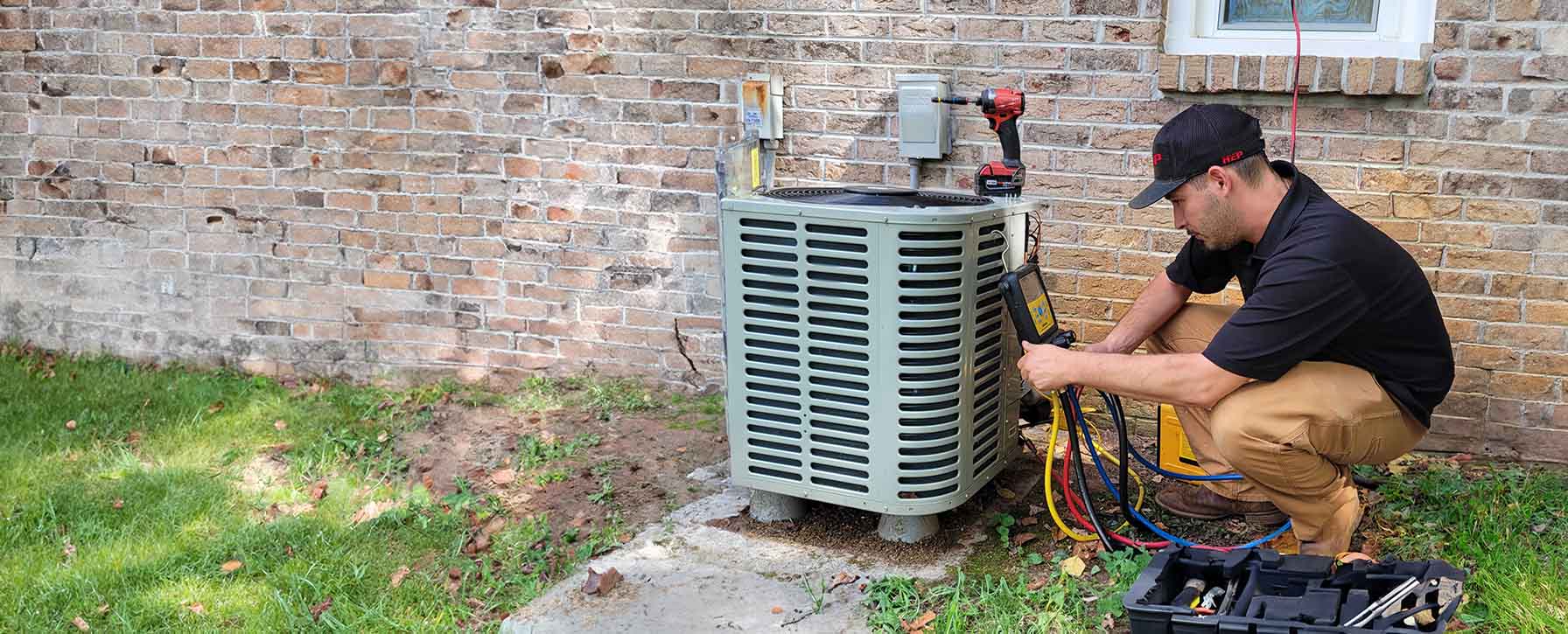

Energy Consumption
Your trusted partner for professional home services. Quality workmanship, guaranteed satisfaction.




- HEP
- Energy Consumption
Energy Consumption | Thermostat Upgrades | Heating and Air Conditioning | Heiskell
Feel the difference a smarter home can make. HEP’s energy-consumption experts in Heiskell specialize in thermostat upgrades that fine-tune your heating and air conditioning to match both your lifestyle and our unpredictable East Tennessee weather. By replacing outdated dials with intelligent, Wi-Fi–enabled controls, we help you trim utility costs, reduce carbon footprint, and enjoy room-by-room comfort that always feels just right.
From seamless installation and custom programming to real-time monitoring on your phone, our team handles every step so you can simply relax and watch the savings roll in. Whether you’re battling a winter chill or midsummer humidity, HEP’s local technicians keep your system running at peak efficiency—protecting your wallet, your comfort, and the planet in one easy upgrade.
FAQs
How can upgrading my thermostat reduce my energy consumption in Heiskell’s variable climate?
Replacing an older manual or basic programmable thermostat with a modern smart thermostat can cut heating and cooling energy use by 10–20 %. Smart models learn your schedule, sense occupancy, and adjust setpoints automatically, so your HVAC system runs only when needed. In Heiskell, where temperatures swing from humid summers to chilly winters, that adaptive control prevents the common habit of over-conditioning the home, lowering monthly utility bills without sacrificing comfort.
Are smart thermostats compatible with my existing furnace or heat pump?
Most smart thermostats work with the 24-volt (low-voltage) control systems found in gas furnaces, heat pumps, and central air conditioners that are common in Heiskell homes. Before purchase, confirm the thermostat supports the number of heating and cooling stages your system has and whether a ‘C’ (common) wire is available for power. If you have a line-voltage baseboard heater or a proprietary communicating HVAC system, you will need a model specifically designed for those setups or an interface module.
What features should I look for when choosing a new thermostat for energy savings?
Key energy-saving features include: (1) Learning algorithms that build a schedule automatically; (2) Geofencing or occupancy sensors to set back temperatures when you’re away; (3) Humidity and outdoor-weather integration to optimize comfort settings; (4) Detailed energy-use reports so you can spot waste; (5) Compatibility with local utility demand-response programs for potential bill credits; and (6) Wi-Fi connectivity for remote control via smartphone or voice assistants.
Does my utility company or the State of Tennessee offer rebates for thermostat upgrades?
Yes. TVA’s EnergyRight program, which serves the Heiskell area through local power companies, often provides bill credits or mail-in rebates (typically $50–$100) for qualifying ENERGY STAR® smart thermostats. Additional state or federal incentives may be available during limited-time energy-efficiency campaigns. Keep receipts and the ENERGY STAR certificate, and submit the online rebate form within 60 days of purchase to secure your incentive.
Can I install the new thermostat myself, or should I hire a professional?
Many homeowners with basic DIY skills can replace a thermostat in about 30 minutes, provided a proper ‘C’ wire already exists. However, if wiring is unclear, if you have a heat pump with auxiliary heat, or if you need to add a C-wire or external power adapter, hiring a licensed HVAC technician is recommended. A professional installation ensures correct wiring, optimal placement away from drafts or sunlight, and a quick tutorial on advanced features.
What maintenance or updates are required after upgrading my thermostat?
Maintenance is minimal. Ensure the thermostat’s firmware stays current by keeping it connected to Wi-Fi; updates install automatically to improve efficiency algorithms and security. Replace thermostat batteries annually if your model uses them. Periodically review energy-use reports, adjust schedules during seasonal changes, and clean the thermostat face with a dry cloth to keep sensors unobstructed.